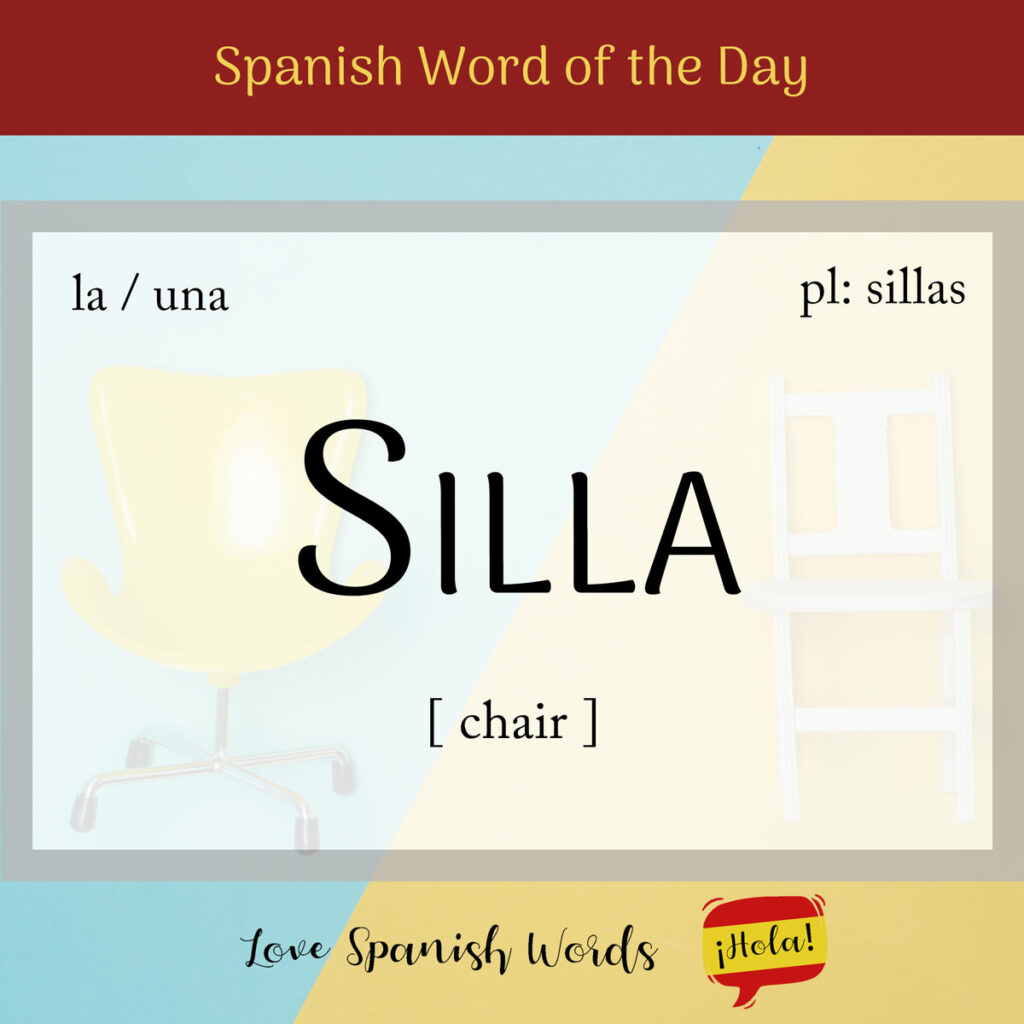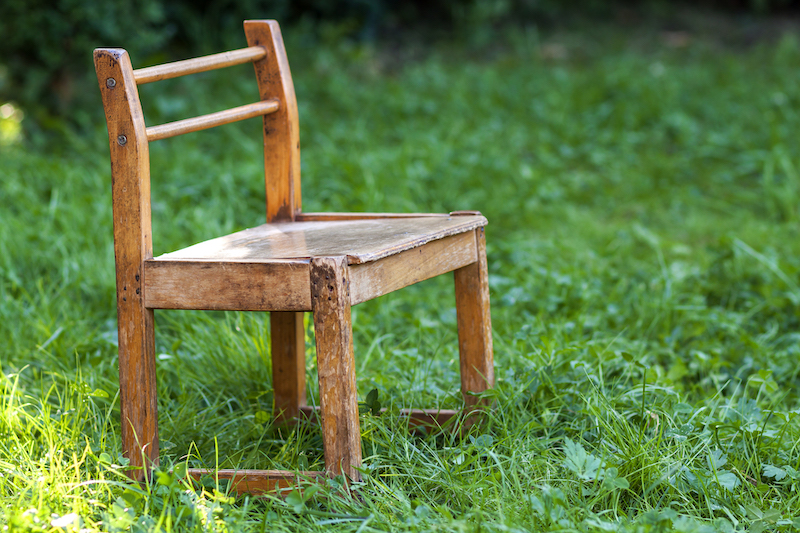The chair, known as silla in Spanish, has been in use since Ancient Egypt and has been prevalent in the Western world since the time of the Greeks and Romans.
Latin American Pronunciation
European Pronunciation

Silla is derived from the Old Spanish siella, which originates from Latin sella meaning seat. It is ultimately derived from the Proto-Italic *sedlā and Proto-Indo-European *sed-.
It is a feminine noun that takes the following definite and indefinite articles:
- la silla = the chair
- una silla = a chair
- las sillas = the chairs
- unas sillas = some chairs
To sit on a chair translates to sentarse en una silla, while to get up from a chair is levantarse de una silla.
Estás sentado en mi silla.
You are sitting on my chair.
Chairs come in various shapes and sizes, but here are a few types you’re likely to encounter during your Spanish learning journey:
- silla de ruedas = wheelchair
- silla plegable = folding chair
- silla alta = high chair
- silla de balanza / mecedora = rocking chair
- silla eléctrica = electric chair
- silla giratoria = swivel chair
- silla de niño = pushchair
- silla de seguridad = car seat (for a child)
You may wonder why we didn’t include one of the most common and comfortable chairs – the armchair – on the list. That’s because it has a name of its own: la butaca.
Esta silla es muy cómoda.
This chair is so comfortable.
Silla is also the word for a saddle in Spanish, also known as silla de montar.


Fun Fact:
Chairs date back to 3100 B.C., with potential earlier instances, though this marks the earliest documented evidence of their existence.
Until recently, chairs were seldom used by the majority of the world’s population, and many still refrain from using them today!

